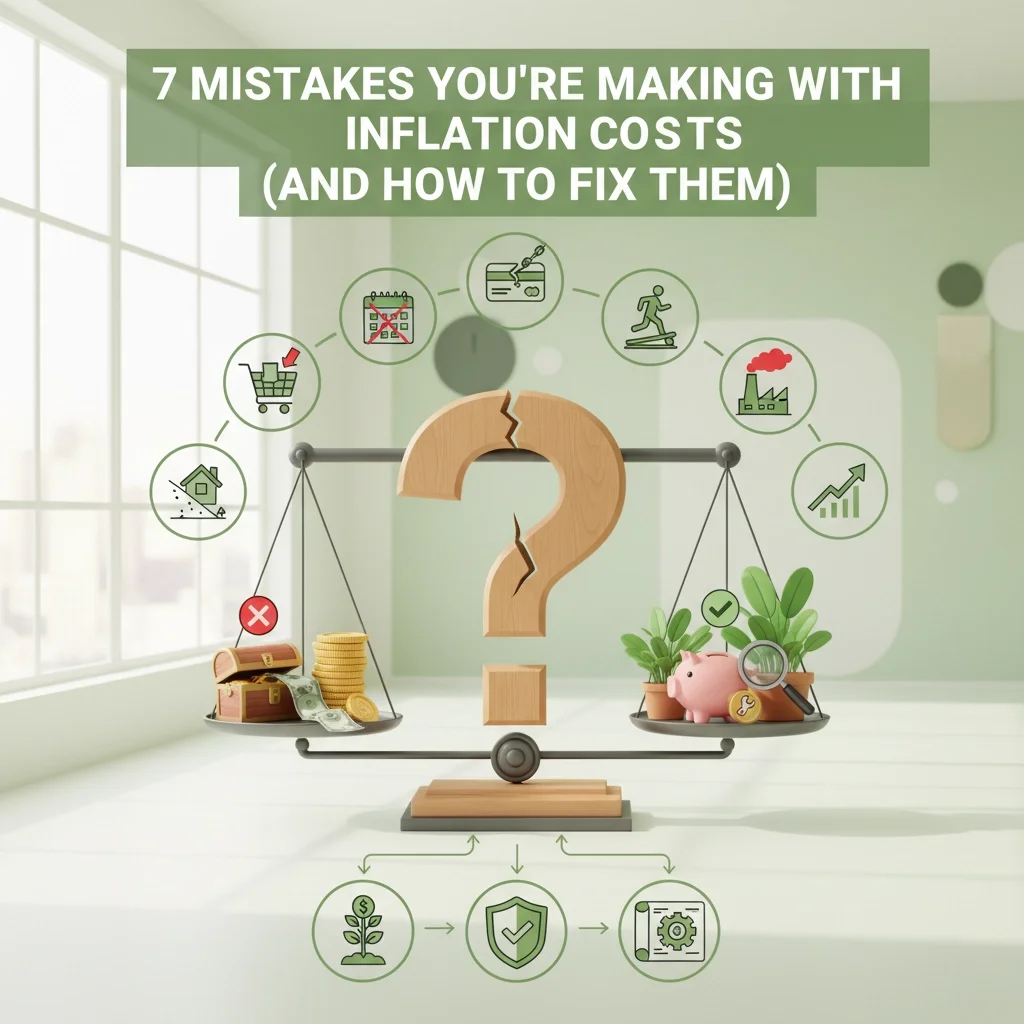7 Mistakes You're Making with Inflation Costs (and How to Fix Them)
Inflation is more than just rising prices at the grocery store – it’s a silent force that can undermine your business strategy, mess with your personal finances, and trip you up if you’re not careful. Let’s dive into seven of the most common mistakes people make when it comes to inflation costs, and: more importantly: how you can fix them.
1. The "Peanut Butter Spread" Pricing Mistake
During inflationary periods, many businesses take the "peanut butter spread" approach, applying blanket price increases across every product or service. Sounds easy, right? But this strategy ignores nuance. Some products have more price-sensitive customers, others face stiffer competition, and a flat increase can turn loyal clients into bargain hunters elsewhere.
What can go wrong:
Customers migrate to competitors’ lower-priced products
Price gaps widen, giving rivals an edge
More demands for discounts and negotiation headaches
How to fix it:
Analyze product categories individually. Increase prices strategically based on demand, competition, and customer loyalty.
Use cost-plus pricing sparingly. Focus on the value you deliver, not just matching cost hikes.
Communicate clearly with your customers about why some price changes are necessary.
2. Using Unrealistic Inflation Projections
When forecasting for the future, it’s tempting to use a rosy 2% inflation figure: that’s what many financial tools and retirement calculators default to. But the U.S. average since 1913 is closer to 3.28%, and recent years have pushed even higher.
Why it matters:
Underestimating inflation means you may not save enough for retirement, future expenses, or business reinvestment.
Your long-term plans could fall drastically short.
How to fix it:
Base your planning on historical inflation averages or even include a buffer for uncertain years.
Update your assumptions annually, not just once every decade.
3. Incorrectly Calculating Inflation-Adjusted Returns
A classic mistake in both personal and business finances: subtracting inflation directly from investment returns. For example, if your investment grows at 7% and inflation is 2%, you might think your real return is 5%. That's not quite right! The correct formula is:
(1 + investment return) ÷ (1 + inflation rate) – 1
Even a tiny percentage difference compounds into huge gaps over time. A small slip here can mean hundreds of thousands (or even millions) in lost value over decades.
How to fix it:
Always use the correct inflation-adjusted return formula.
Consult with a pro (like our team at Dynasty Accounting Firm) or use reputable financial planning software to double-check long-term projections.
4. Money Illusion: Confusing Nominal and Real Prices
It’s easy to look at a price tag and judge if something is more expensive than last year. But if incomes and costs are rising at the same pace, has it really become more expensive? Money illusion: focusing only on the “face value” or nominal price: can lead you to misjudge true buying power.
How this trips you up:
You might believe you’re earning or spending more, but in reality, your money only stretches as far as before (or even less).
How to fix it:
Compare prices in real terms, adjusting for inflation, especially when making big financial decisions or setting long-term goals.
Review historical trends with inflation calculators or consult an accountant.
5. Ignoring Competitive Positioning
Some businesses adjust prices without checking what competitors are doing. If you raise prices blindly while your competition offers deals or smarter increases, you risk bleeding customers or getting stuck in a price war.
Risks:
Losing market share
Alienating your most loyal clients
Damaging your brand’s reputation
How to fix it:
Conduct regular competitor analysis before you make pricing changes.
Understand your unique value proposition and justify your pricing with added value, not just inflation talk.
Communicate adjustments honestly with your customers.




